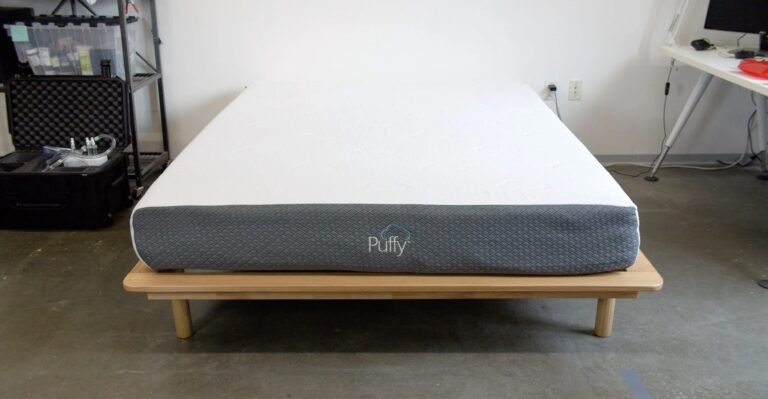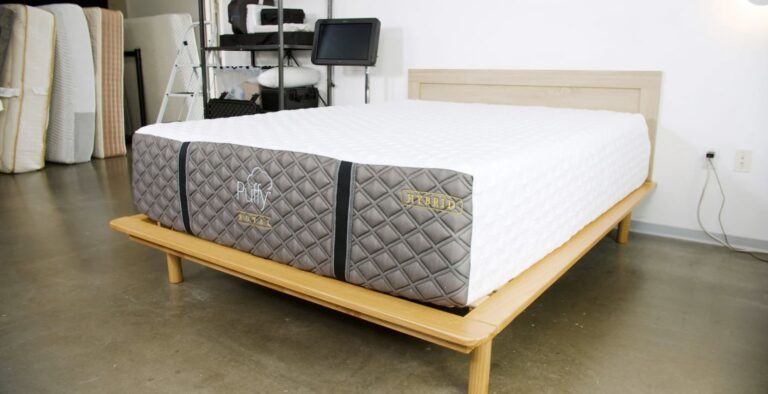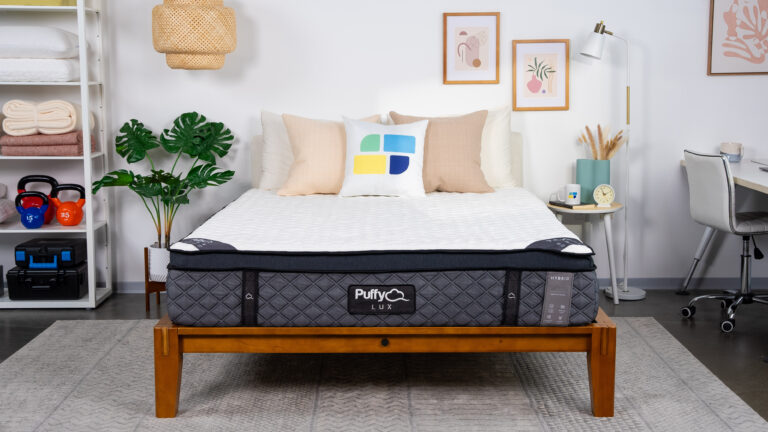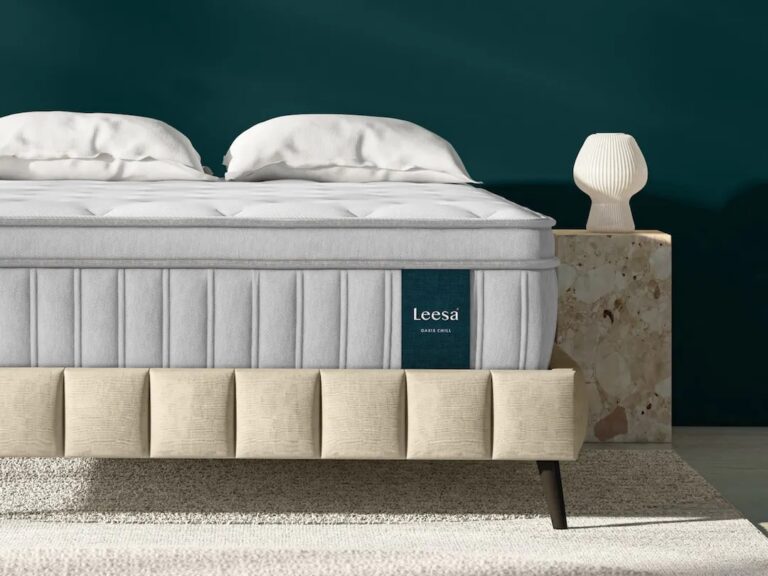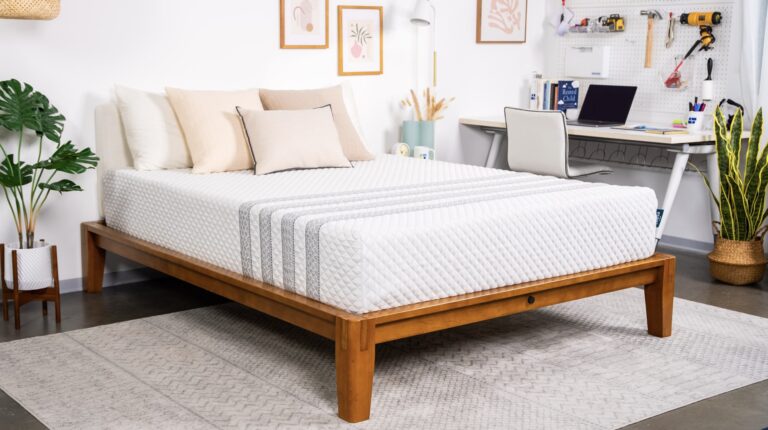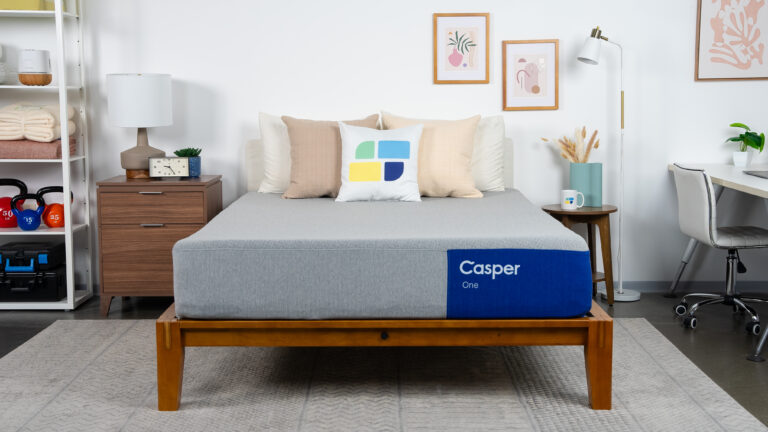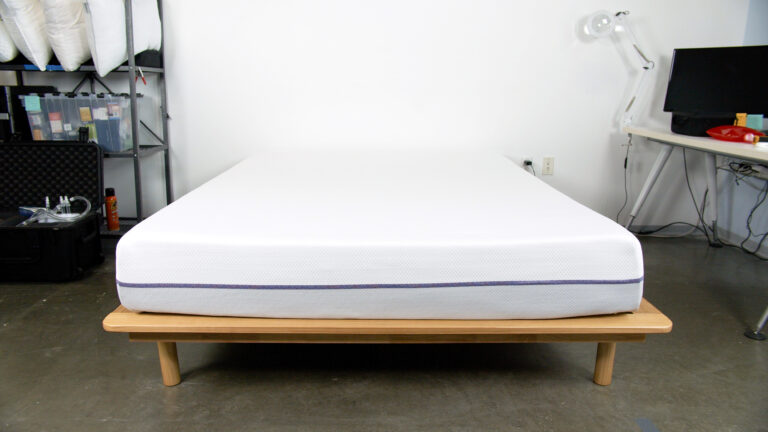When you buy through our links, we may earn a commission. Products or services may be offered by an affiliated entity. Learn more.
Puffy Cloud vs. Leesa Original Mattress Comparison
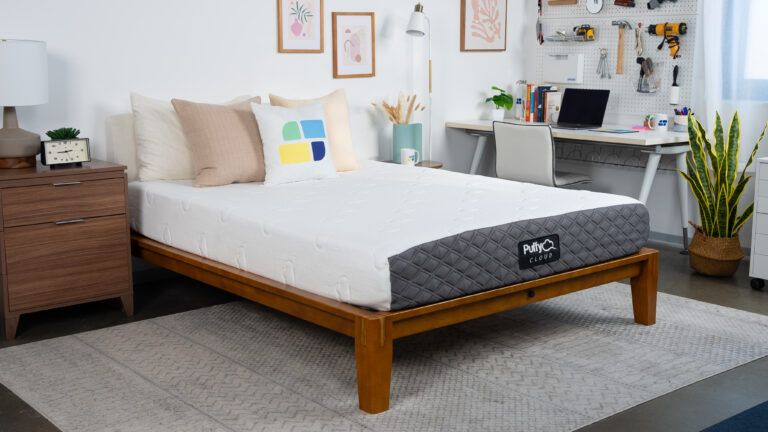
Puffy Cloud Mattress
Bottom Line
The Puffy Cloud is an all-foam mattress that delivers the classic, close-contouring hug of memory foam.
$750 off + free accessories at Puffy
Full Mattress ReviewVS
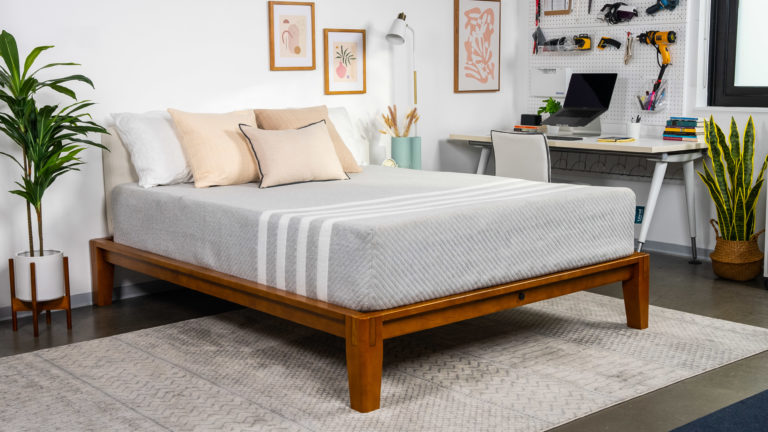
Leesa Original
Bottom Line
Available in all-foam and hybrid models, the Leesa Original combines foams engineered for breathability with memory foam.
25% off sitewide
Full Mattress ReviewPuffy and Leesa are leading mattress-in-a-box retailers offering similar products, which can make it tricky to pick one over the other. Puffy launched in 2017, while Leesa got its start in 2014. Both companies offer their mattresses direct-to-consumers and they’re also sold by specific third-party retailers. In addition to mattresses, you can buy foundations and bedding from Leesa and Puffy.
The companies’ flagship mattresses are the Puffy Cloud and the Leesa Original, which have all-foam constructions. Puffy also sells the Puffy Lux, which is a hybrid version of the Cloud. Leesa offers its Original as a hybrid as well — it’s called the Leesa Original Hybrid. Our comparison focuses on the all-foam Puffy Cloud and Leesa Original.
We’ll explain the differences between these beds as well as their pros and cons. You’ll find out how they fared during our sleep lab testing and hear what our experts thought when they tried them. We’ve also included price information, company policy comparisons, and a summary of real customer reviews.
Quick Look
$1,049 – $2,399
$639 – $2,079
Medium (5)
Medium (5), Medium Firm (6)
- Close body-contouring and pressure relief for side sleepers
- Excellent motion isolation and no noise
- Responsive yet cushioning mixed-foam designs
- Ideal conforming and support for many sleepers weighing up to 230 pounds
- 101 Nights (14-night requirement)
- Lifetime, Limited
- 120 nights (30-night requirement)
- Lifetime, limited
- A+
- A+
Our Testing Team’s Take
When we review mattresses, we put in the work to really understand them. In our Seattle sleep lab, our team has tested more than 2,000 mattresses. We put every single one through a series of tests that measures how it performs against factors that are important to most sleepers, like temperature regulation, edge support, and pressure relief.
We also try every bed personally to see how they feel for people with different body weights and favorite sleeping positions. Our team members assign each mattress a score that indicates how comfortable and supportive it felt while they slept. We combine their feedback with our sleep lab data to give each mattress an overall score, which we then use to determine the best mattress.
Our Verdict
People who like an all-foam mattress with plenty of hug and pressure relief will find that the Puffy Cloud and Leesa Original both fit the bill. They’re not the most versatile mattresses we’ve tested, but they both serve their intended purpose. These beds have a medium (5) firmness and they feel quite plush and body-hugging, which can be ideal for side sleepers and those who need deep pressure relief.

Colin Simpson
Product Research Manager
Side
190 pounds
Talks in sleep (like, a lot)
“As soon as I lay down on the Puffy Cloud, I was impressed by its pressure relief. I’m a side sleeper, so I pay close attention to how well a mattress cushions my hips and shoulders. The Puffy Cloud really softened impact in those areas, letting me rest comfortably.”
Because these beds have so much in common, choosing the right mattress really comes down to your body weight and sleep preferences. We found the Leesa Original better suited to side sleepers under 130 pounds, while the Puffy Cloud offered strong support to side sleepers up to 230 pounds. The Leesa sleeps slightly cooler than the Puffy and its surface is less conforming.
If you like close body-hugging, opt for the Puffy Cloud. If you like a more even sleep surface, the Leesa Original is probably a better bet. Price-wise, these beds are quite similar, with the Puffy costing slightly less than the Leesa.

Jeremy Klein
Senior Product Testing Manager
Side
160 pounds
Nightly melatonin user
“The Leesa Original feels comfortable right off the bat. When lying on my side, I felt moderate contouring of my shoulders and hips, and I woke up without any aches or pains.”
Construction and Materials
Though the Puffy Cloud and Lessa Original look very similar at first glance, there are some notable differences in their constructions.
| Construction Analysis | Puffy Cloud | Leesa Original |
|---|---|---|
| Cover | Stain-resistant polyester with cooling fibers | Polyester, viscose |
| Comfort Layer | Felted fiber 2” Gel-infused memory foam | 2” polyfoam |
| Transitional Layer | 2” polyfoam | 2” memory foam |
| Support Core | 6” polyfoam | 6” polyfoam |
Puffy Cloud Breakdown
The Puffy Cloud has a straightforward design and a medium firmness that’s a 5 out of 10 on our 10-point scale. Its comfort system has two layers, the first is felted fiber that’s included to enhance breathability and give the bed a bit more cushioning. Under the fiber, there’s a 2-inch layer of gel-infused memory foam that adapts to the body’s shape without absorbing too much heat.
The transitional layer is 2 inches of polyfoam that’s formulated to keep your spine aligned and evenly supported. The final layer is 6 inches of polyfoam that lends structure and stability to the layers above. The cover has two separate fabrics.
The top fabric is a stain-resistant polyester blend with cooling fibers woven into its surface to help dissipate heat. The bottom portion of the cover is grippy to ensure the mattress doesn’t move on its foundation. Altogether, the Puffy Cloud measures 10 inches tall.
Leesa Original Breakdown
The all-foam Leesa Original also has three foam layers and a medium (5) feel. Its comfort system is a 2-inch polyfoam layer that’s engineered to feel more responsive and breathable than traditional polyfoam. The transitional layer is 2 inches of memory foam that disperses weight, absorbs impact, and hugs your body to prevent pressure points from developing.
For a support core, the Leesa has a 6-inch high-density polyfoam layer that boosts support and increases the bed’s overall durability. The cover is a stretchy polyester and viscose fabric that’s designed to let air flow freely between the cover and mattress. Altogether, the Leesa Original is 10 inches tall.
Mattress Sizing and Weight
The Puffy Cloud and Leesa Original are both 10 inches tall, so they should fit within any standard fitted sheets you choose. The Leesa weighs roughly 20 pounds more, but make sure to get help when lifting or moving either bed. These are both mattress-in-a-box models that ship compressed and sealed. You can buy either mattress in a full range of sizes – twin, twin XL, full, queen, king, and California king. The Puffy Cloud also comes in split king.
| Mattress Model | Profile | Weight (Queen) |
|---|---|---|
| Puffy Cloud | 10” | 54 lbs. |
| Leesa Original | 10” | 71 lbs. |
Performance Ratings
In terms of performance, the Puffy Cloud and Leesa Original have a fair amount in common. As memory foam mattresses, we’d expect them to offer decent pressure relief and motion isolation – and they do. Our testing shows that both beds are excellent options if you experience pressure points beneath the hips and shoulders. The Puffy Cloud slightly outperformed the Leesa during motion isolation trials, but they’re both great mattresses for couples who wake up easily when movement occurs in bed.
People who prefer a more responsive sleep surface will likely prefer the Leesa, which we found easier to move around on. The Leesa is also a bit better at regulating temperature, which hot sleepers may want to keep in mind. Neither bed has a reinforced perimeter, and they lack strong edge support as a result. Those with mobility limitations may want to seek out a more structured hybrid mattress.
According to our testing team, the Puffy Cloud is the best fit for side sleepers under 230 pounds, who like its plush surface. The Leesa also proved quite comfortable for side sleepers under 130 pounds. Stomach sleepers, back sleepers, and people over 230 pounds said they prefer a bed with more support.
Mattress Pricing
The Puffy Cloud and Leesa Original are comparable to one another price-wise. The Leesa costs slightly more, but both beds are squarely in the average range for an all-foam mattress, which is $700 to $1,200 for a queen size. Puffy and Leesa run regular sales that can lower costs by a few hundred dollars, making them worthy options for the best cheap mattress.
Puffy offers nearly identical sleep trial and shipping policies. Our testing indicates that the Leesa is slightly more durable than the Puffy Cloud, but both should last up to or just past the average foam mattress’ lifespan.
| Policy | Puffy Cloud | Leesa Original |
|---|---|---|
| Sleep Trial | 101 nights | 120 nights |
| Warranty | Lifetime, limited | 10-year, limited |
| Shipping | Free to all 50 states | Free to all 50 states |
| White Glove Delivery | N/A | Available via third-party agency |
What Customers Are Saying
The Puffy Cloud gets positive reviews from owners who like its plush feel and substantial pressure relief. Hot sleepers also say that it regulates temperature well, especially compared to other foam mattresses they’ve used. It has also received high marks for durability too, as many owners say that the foam doesn’t sag after extended use. Some reviewers say there’s not enough edge support and other customers say it’s too soft for stomach sleepers and heavier sleepers.
Leesa owners report that its medium feel is a good option for combination sleeping and that it’s a versatile mattress. It gets good reviews for breathability and motion isolation, with some customers saying they don’t overheat while sleeping. Some side sleepers report that they think the medium surface feels more like a medium firm mattress and it doesn’t give them enough cushioning under their hips.

Still have questions? Ask our community!
Join our Sleep Care Community — a trusted hub of product specialists, sleep health professionals, and people just like you. Whether you’re searching for the perfect mattress or need expert sleep advice, we’ve got you covered. Get personalized guidance from the experts who know sleep best.

